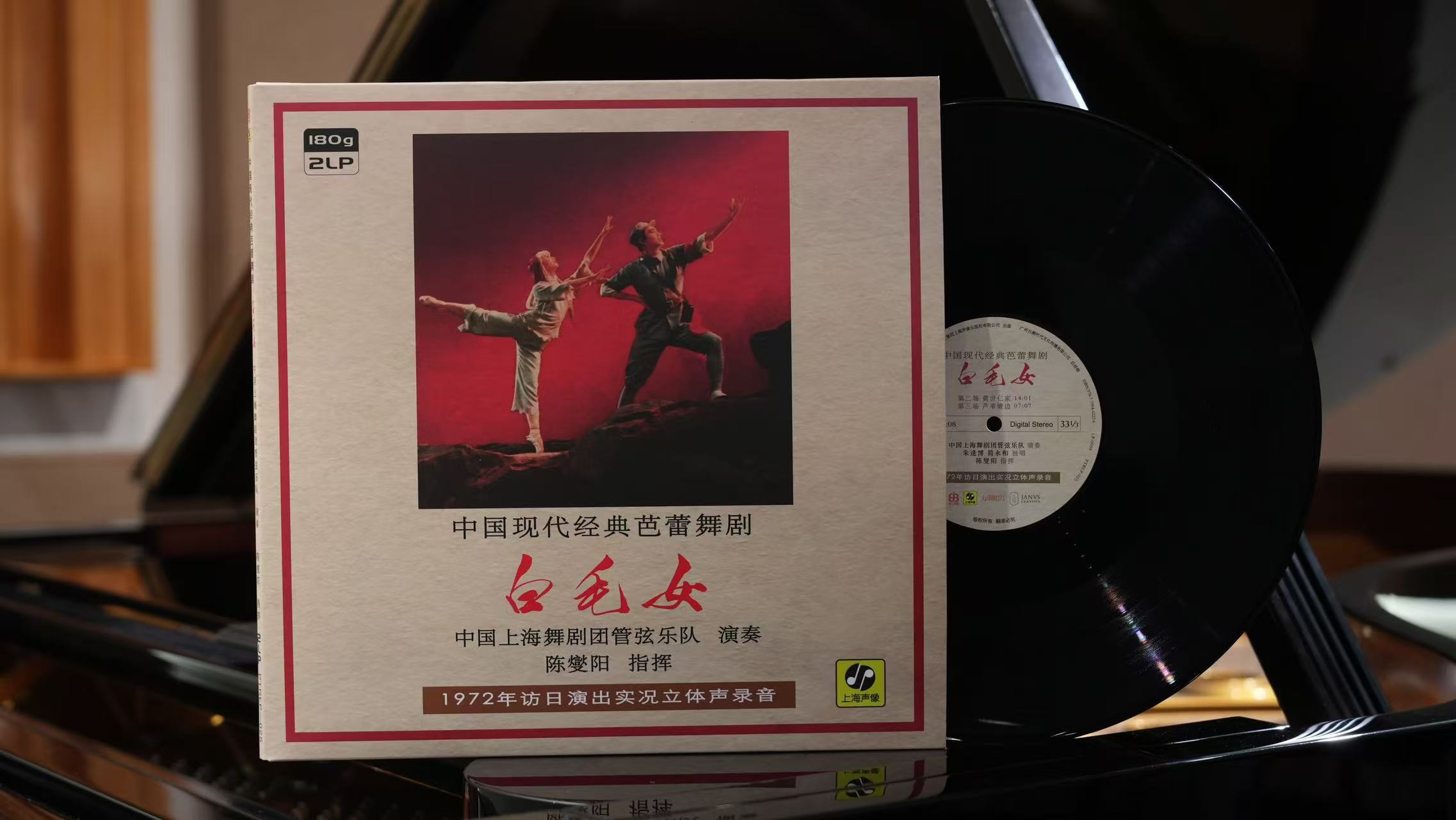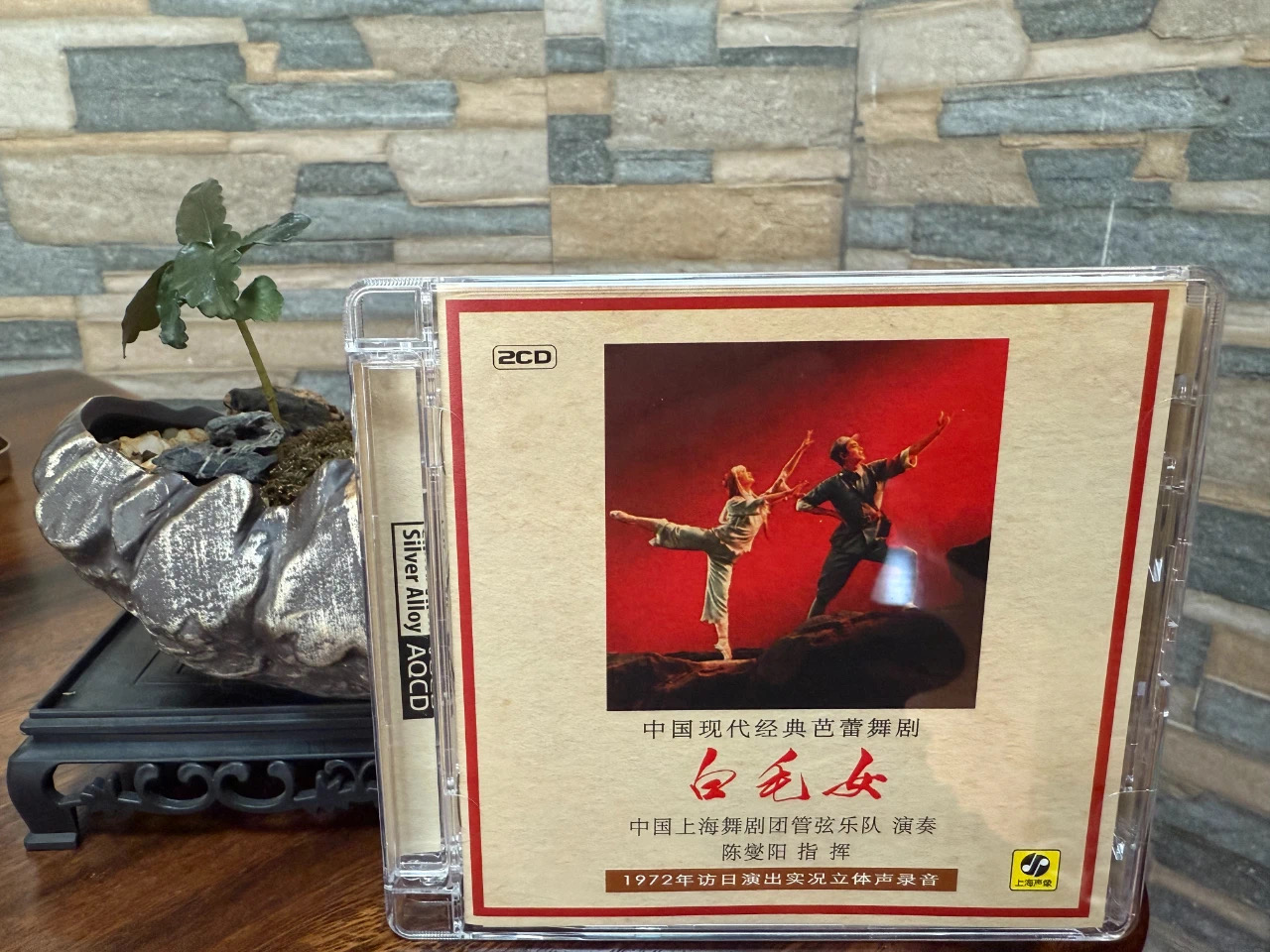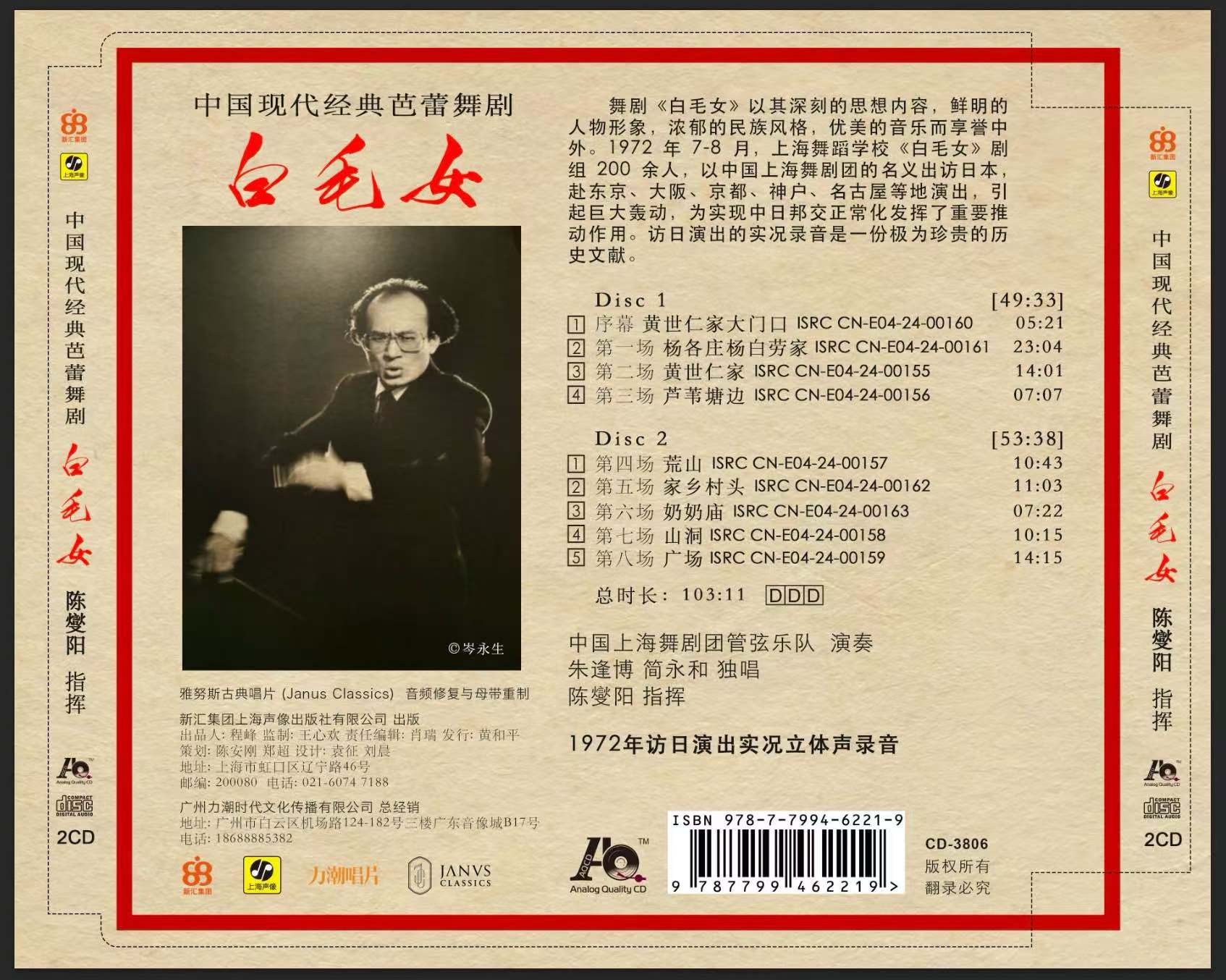January 20, 2025
One of the world's earliest digital recordings: Janus Classics restores and remasters the archive recording Chen Xieyang's 1972 Japan tour of "The White-Haired Girl"

This release features a precious live recording of The White-Haired Girl, conducted by Maestro Chen Xieyang at the age of 33 during the Shanghai Ballet Theatre’s visit to Japan in 1972. Prior to this release, this valuable recording was preserved only as an archive and remained virtually unknown to the public, except for the artists who participated in the tour.
As a pioneering achievement in recording technology, Japan’s NHK research team developed the world’s first PCM digital recording device in 1967 at 12-bit 30kHz. This equipment was designed to address the limitations of analog recording, including accuracy, frequency response, dynamic range, and multi-channel operation. By 1969, the system had evolved to record two-channel stereo audio at 13-bit, 32 kHz resolution. In 1971, engineers from Denon used this system to produce two recordings: jazz saxophonist Steve Marcus’s Something (Japan Columbia NCB-7003) and experimental percussionist Sutomu Yamashita’s The World of Stomu Yamash’ta (Japan Columbia NCC-8004). These were among the first commercial recordings to use digital technology. Building on this experience, Denon developed the well-known DN-023R 8-channel digital recording system, which recorded 13-bit, 47.25 kHz audio onto open-reel tapes using 4-head VTR video equipment. The first recording using this system was a session with the Smetana Quartet performing Mozart’s String Quartets K 458 and K 421, recorded in Tokyo from on 24-26 April, 1972, and released on LP (Japan Columbia NCC-8501) in October of the same year.
The recording of The White-Haired Girl by Maestro Chen Xieyang was captured during the August 1972 tour. Given the tour’s significant historical and political importance, the Japanese side employed the cutting-edge DN-023R system to produce the recording. A special LP (catalog number TD-3021/3022, not part of the commercial NCC series) was swiftly pressed at the end of August and presented as a gift to Maestro Chen and some members of the touring ensemble. Although the recording date was later than half of the sessions included in the October releases, The White-Haired Girl holds the distinction of being the earliest recording made with Denon’s PCM digital technology to be pressed into vinyl, underscoring its immense historical value. In the following five years, Denon used the DN-023R system to record numerous classical and popular music albums across the globe, many of which remain beloved by music enthusiasts to this day. The PCM digital technology provided recordings with a refined, crystal-clear tone and an exceptional tolerance for dynamic range, distinguishing these recordings from those by Western labels, which only began adopting digital recording technology in the late 1970s or even early 1980s. This newly released recording of The White-Haired Girl can be considered a key that opened the door to the era of digital recording.

This release is based on the original LPs preserved by Maestro Chen Xieyang and violist Lu Hongyuan, a member of the ensemble on the 1972 tour. After professional cleaning and multiple test auditions using different equipment, the well-preserved quality of the LPs revealed remarkably clear sound. Janus Classics’ audio team, after careful analysis of the sonic characteristics, decided to use a combination of state-of-the-art turntables and vintage tonearms and cartridges from the golden era of stereo LP production in the 1960s and 70s. The digitization was carried out at an ultra-high resolution of 32-bit, 192 kHz using flagship-grade A/D conversion equipment. This approach retained the recording’s original era-specific character while enhancing the precision of the digital signal, ensuring minimal dynamic loss. Following digitization, the best-preserved segments of the two LPs were restored using Janus Classics’ renowned 32-bit spectral restoration technology. Surface noise, inherent in LP recordings, was eliminated without compromising high-frequency signals, background noise was reduced to an acceptable level, and distortions caused by early digital recording limitations during large ensemble choral sections were corrected. Audience noise, which frequently disrupted the music’s flow due to the recording’s live nature, was also mitigated.
The remastering process took nearly 200 hours, involving meticulous frame-by-frame listening and adjustments using specialised hardware and software. Channel balance was improved, instrument placement was clarified, and the soundstage was naturalised without adding artificial reverb. This ensured that the recording adhered to modern audio production standards while preserving its authenticity. After remastering, the vivid colours of traditional Chinese instruments and the rich percussion shone brilliantly under Maestro Chen’s baton. The unison strings and the soaring vocals complemented each other perfectly, while every detail of the stage performance—such as whip cracks, dancers’ footsteps, and gunshots—came alive with dramatic tension.
To honour this artistically, technologically, and historically significant performance, the new release will be published simultaneously on both vinyl and CD. While debates over the superiority of one format over the other have persisted for years, they are ultimately inconsequential. The vinyl master for this release was produced in a specialised factory in the United States, while the CD master has been meticulously crafted to ensure optimal quality. Listening to the vinyl allows one to experience the unique live ambience that high-bitrate audio brings to analogue media, while enjoying the CD offers the convenience of appreciating the finely restored sound through cutting-edge technology. After more than half a century of slumber, this recording—one of the world’s earliest digital recordings—is finally meeting the public. It is not only a tribute to Maestro Chen Xieyang’s decades-long artistic career but also a homage to the Chinese musical pioneers of that era.
